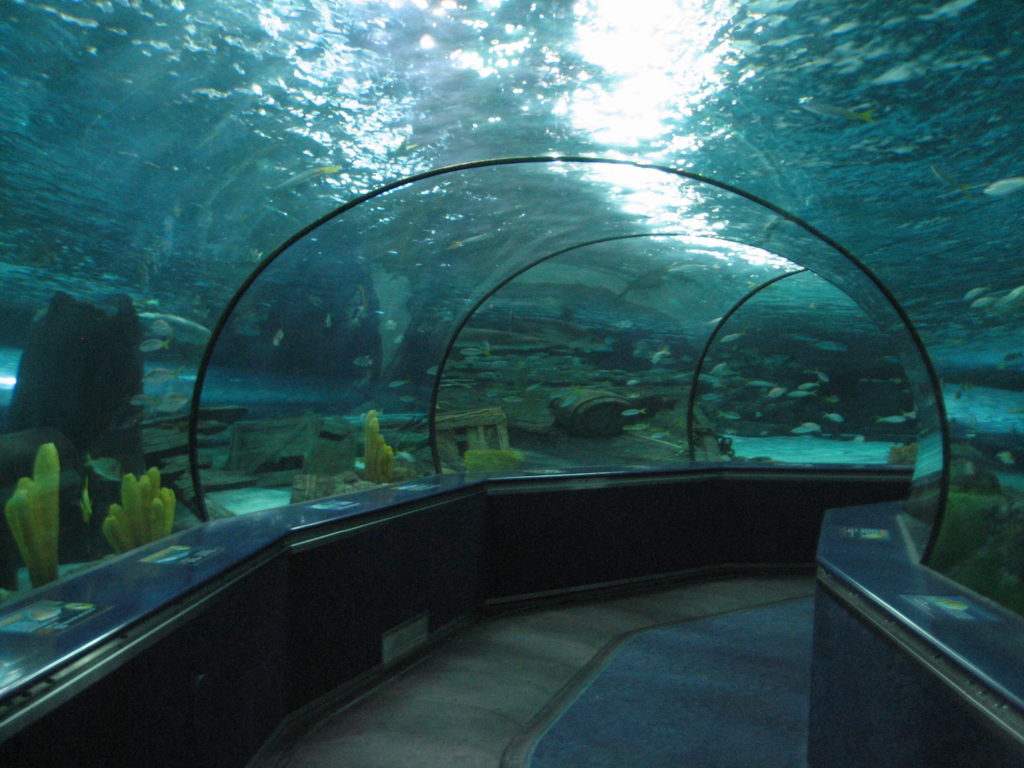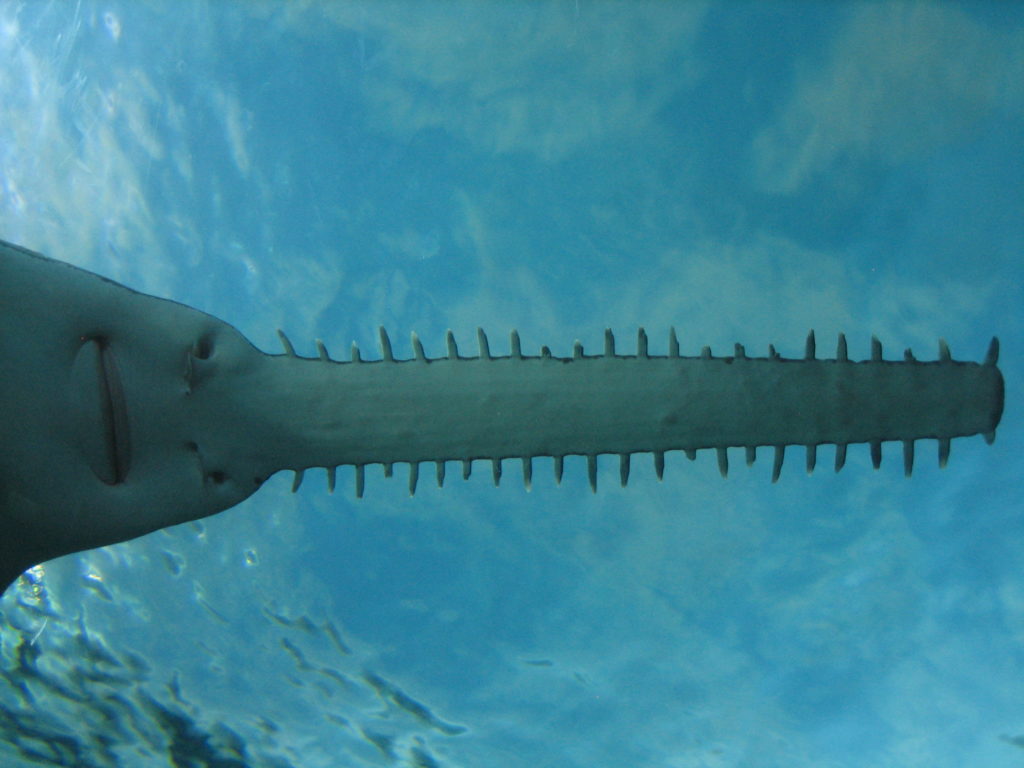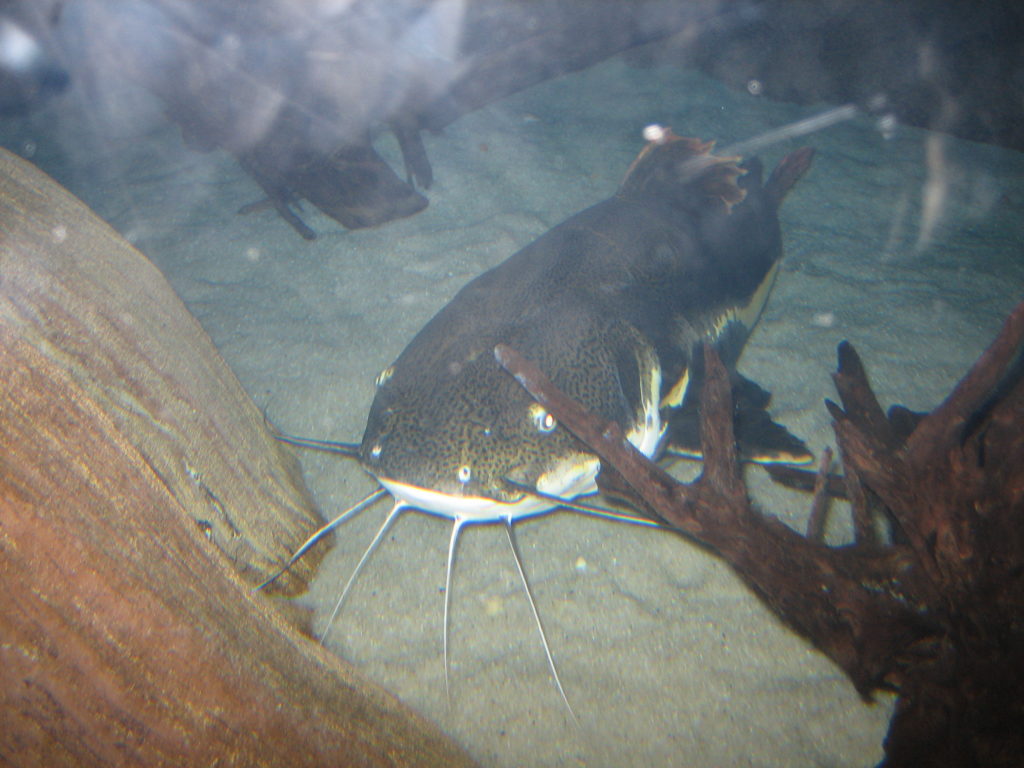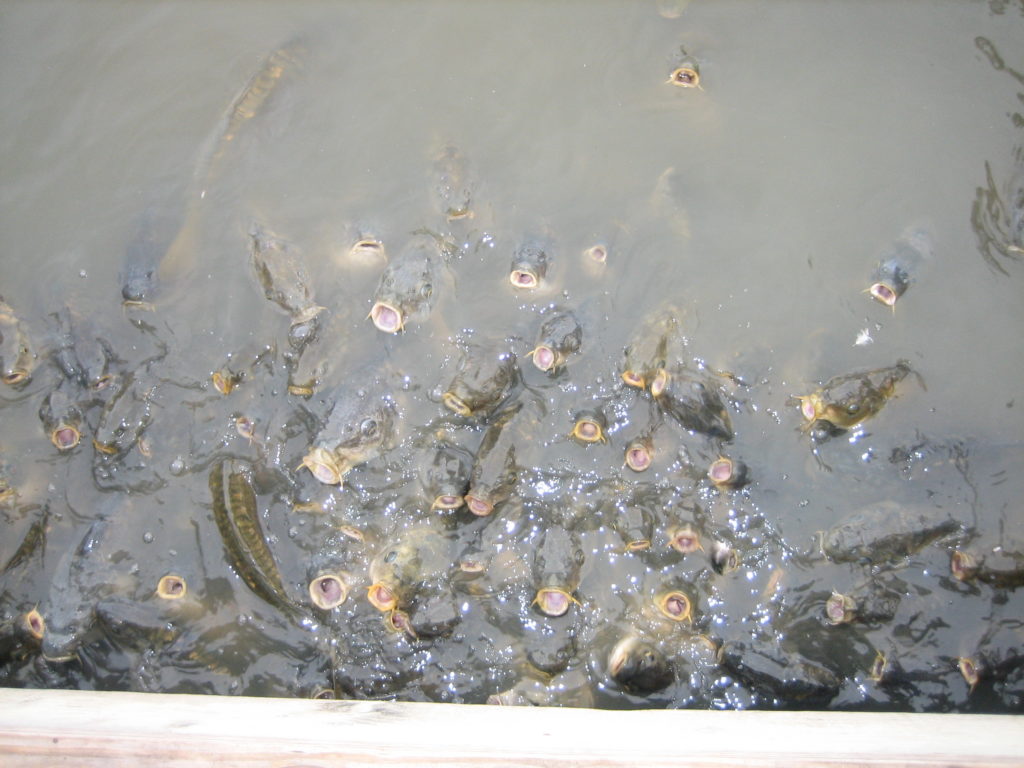 Ripley’s has become synonymous with oddities-based attractions, and you’ll find a bunch of them in Myrtle Beach, South Carolina (including Ripley’s Believe It or Not!, Haunted Adventure, Moving Theater, and Marvelous Mirror Maze). But Ripley’s has also gotten into the aquarium business. Enter the glidepath at Ripley’s Aquarium of Myrtle Beach.
Ripley’s has become synonymous with oddities-based attractions, and you’ll find a bunch of them in Myrtle Beach, South Carolina (including Ripley’s Believe It or Not!, Haunted Adventure, Moving Theater, and Marvelous Mirror Maze). But Ripley’s has also gotten into the aquarium business. Enter the glidepath at Ripley’s Aquarium of Myrtle Beach.
The glidepath is Ripley’s name for their 340-foot long acrylic underwater tunnel, where you walk safely among the swimming sharks, sea turtles, sting rays, and sawfish. This aquarium is one of the rare ones with sawfish.

Sawfish would seem to fit in well with the Ripley’s oddities theme. They look a lot like sharks that have partially swallowed a chain saw, but they are technically a family of rays (like the sting rays that are numerous around them). To confuse things further, sawfish are commonly called carpenter sharks, though that name seems to suit them well. Unfortunately, sawfish are rather rare; they are considered Endangered or Critically Endangered species. Mostly they use the “saw” (technically, a rostrum) to poke around in the bottom sand for food, but they can also slash their way through schooling fish and pick up the pieces.

The aquarium is relatively small but does have a nice selection of the typical tropical fish common to aquariums – tangs of various colors; angelfish; triggerfish, clown fish; cichlids; damsel fish; a really cool 3-foot Arawana; barracudas; groupers; sandbar, blacktip, leopard, bonnethead, and nurse sharks; and a variety of rays. In the Amazon section they have iguanas, poison dart frogs, and piranha. Of course there are also the octopuses, horseshoe crabs, and jellyfish that are ubiquitous to aquariums. They also had a very large catfish.

The aquarium sits at one end of a salt water pond surrounded by a variety of restaurants and other attractions. Unlike the large catfish in the aquarium, apparently the pond’s resident catfish have turned into beggars, eagerly gulping for anything edible tossed in by the touristing hordes.

Overall the aquarium and area are a nice day’s visit. Easy to reach just south of the North/South Carolina border, and with plentiful parking, the aquarium is worth a visit if you’re in the area. My visit was part of a longer road trip that took us down through the center of Virginia and North Carolina, then back up through North Carolina’s Outer Banks and Maryland’s Eastern Shore. Along the way was the North Carolina Aquarium, a quaint little place on historic Roanoke Island. More on that in a future post.
See my Aquariums visited list!
David J. Kent has been a scientist for thirty-five years, is an avid science traveler, and an independent Abraham Lincoln historian. He is the author of Tesla: The Wizard of Electricity and two e-books: Nikola Tesla: Renewable Energy Ahead of Its Time and Abraham Lincoln and Nikola Tesla: Connected by Fate. His book on Thomas Edison is due in Barnes and Noble stores in July 2016.
Follow me by subscribing by email on the home page. And feel free to “Like” my Facebook author’s page and connect on LinkedIn. Share with your friends using the buttons below.











Cool tunnel, and the sawfish is fascinating.
However, the listing of fish (and octopus… mmm…) followed by, “…surrounded by a variety of restaurants…”
They were quite tasty (in the restaurants, not the ones in the aquarium).
Where others wear t-shirts advertising cheap beer or some other vulgarity, all my t-shirts are from aquariums (not counting the required two Tesla t-shirts).
Many Japanese seafood restaurants have their own aquariums (aquaria?). Consequently, I’ve perhaps acquired a slight predatory instinct when peering into them. (-_^)
I have the opposite problem. As an ex-marine biologist, I prefer not to get too intimate with my future meal.